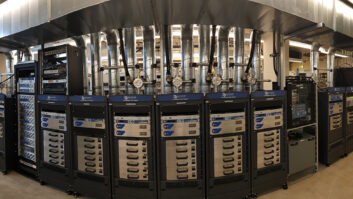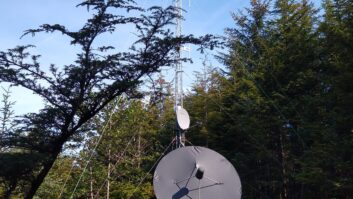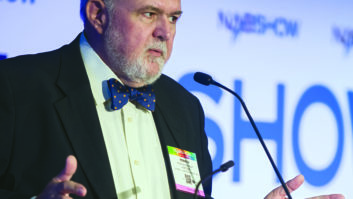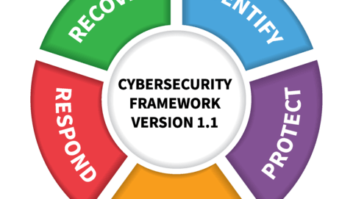How Likely Is the Success of the ‘Personal Audio Recorder’?
It’s unlikely that any reader of this column doesn’t have at least a little awareness of the Personal Video Recorder or PVR, an important new consumer product that has emerged in the last three years or so.
Alternately known as Digital Video Recorder or Personal Digital Recorder, the device is known to most of us by its best-known brand name, “TiVo.”
While other PVR brands such as ReplayTV, Ultimate TV and Dishplayer have been marketed, TiVo has captured the generic labeling prize, like Kleenex and Xerox before it. And like Xerox, the name has even become a verb, as in, “Let’s TiVo ’60 Minutes’ so we can watch the end of the football game.”
I Tivo, you TiVo, he/she/it TiVos.
The PVR has incited strong opinion on both sides. Most PVR owners are vehement in their support of the device’s usage, with some assigning it life-changing status. Meanwhile, many TV broadcasters and advertisers consider it a threat to the existence of the television industry as we know it. (Is that such a bad thing?)
Learning from cable
Nevertheless, despite all the hoopla, the PVR has not enjoyed particularly successful early penetration, at least when compared to other devices with equivalent notoriety in their early days, like CD or DVD. For example, in the first four years of the DVD’s availability, more than 14 million players were sold. Contrast this to the PVR’s first four years, during which only about 1.5 million units have been sold.
This is largely attributed to the need to both purchase PVR hardware and pay a subscription fee to enable the device, often in addition to what the user is already paying for TV service from a cable or satellite provider. (Without a live connection to a particular service provider, the PVR is at best a dumb recorder, essentially a non-linear VCR. With a subscription to its metadata service, the PVR becomes a smart device that runs circles around a VCR’s functionality.)
Only a small minority of enthusiast-class consumers has seemed willing to do this so far, but this obstacle to adoption is about to fall.
The U.S. digital cable TV industry is launching on a massive campaign to include PVR capability in its new digital set-top boxes, hoping to thereby improve uptake of digital cable, and reduce churn among new users. This subsidy of PVRs in cable set-top boxes is expected to double the penetration of the devices over the next year or so.
It’s worth the investment by cable companies because it is expected to accelerate digital cable conversion by consumers, and thereby allow cable operators to shut down their less spectrally efficient — and thereby less profitable — analog services sooner. Moreover, PVR capability may allow cable operators to improve customer satisfaction and increase purchase rates for premium services such as pay-per — view and video — on-demand.
Another important ingredient is the food chain for that program scheduling data used by PVRs. Today, the PVR metadata that service providers like TiVo use to populate their PVRs’ electronic program guides (EPGs) is obtained from schedule — data aggregators like Tribune Media Services and Gemstar — TV Guide. (The term “interactive program guide” or IPG also is used on occasion.)
These companies collect schedule data from all TV networks, stations and cable channels, and deliver it to customers for publication. Originally those customers were all print-media publishers, but increasingly such data is used by companies like TiVo or cable/satellite MSOs to feed their subscribers’ EPGs.
(Note that the industry is still struggling to convert to a more dynamic model. In the print environment, lead times were weeks ahead of air dates, and last-minute changes were never accommodated. The EPG world demands far more frequent updates, a distribution mechanism for which has not yet been broadly instituted. This will remain a significant issue as the PVR/EPG environment matures.)
Below PAR
So what about a radio equivalent to the PVR? Some initial attempts at a Personal Audio Recorder have recently been introduced – see Radio World Oct. 8, page 1 – but these are not yet true PVR counterparts. Numerous obstacles stand in the way of such equivalence.
First, the consumer incentive to adopt a PAR is less compelling than that of the PVR, because most radio services are format — driven rather than program or schedule — oriented. Therefore the concept of time-shifting generally holds less appeal; most programming is essentially similar at all times. The exceptions to this are sports and some talk-oriented programming, and a substantial amount of public radio (which is still largely program/schedule-driven, as detailed in recent columns), but these uses may not create the critical mass required to drive the commercial success of a PAR. It is largely for this reason that an “ACR,” an audio-only equivalent of the VCR, never emerged, despite numerous attempts to launch such a product.
Next, consider that there is no existing universal aggregator of schedule data for U.S. radio.
Besides the fact that a traditional market or demand for such service does not exist, the number of stations that such a provider would have to manage is an order of magnitude greater for radio than it is for TV in the United States. Thus it would seem challenging to make comprehensive radio schedule-data aggregation into a viable business today.
So today’s PAR vendors have no third-party source for fully featured EPG data, leaving most PARs as essentially manual devices, like VCRs, when it comes to time-shifting. (As non-linear devices, however, some PARs add “live-pause” functionality, which certainly beats the VCR. Also, at least one PAR vendor has developed its own online database to provide some level of EPG-like functionality for Internet radio, but some user assembly is still required, and it does not contain full national, broadcast-radio schedules.)
Finally, remember that the radio business is advertiser-driven, and commercial radio broadcasters, like their TV brethren before them, are in no hurry to witness the success of any ad — zapping device — which is how the traditional TV industry views the PVR above all else. So most broadcasters will likely do what they can to slow or stop the emergence of a PAR.
Nevertheless, there may indeed be a robust market ahead for some type of non-linear audio recorder with radio tuning capability. To succeed, however, it may require a different approach than the PVR. More on this next time.












